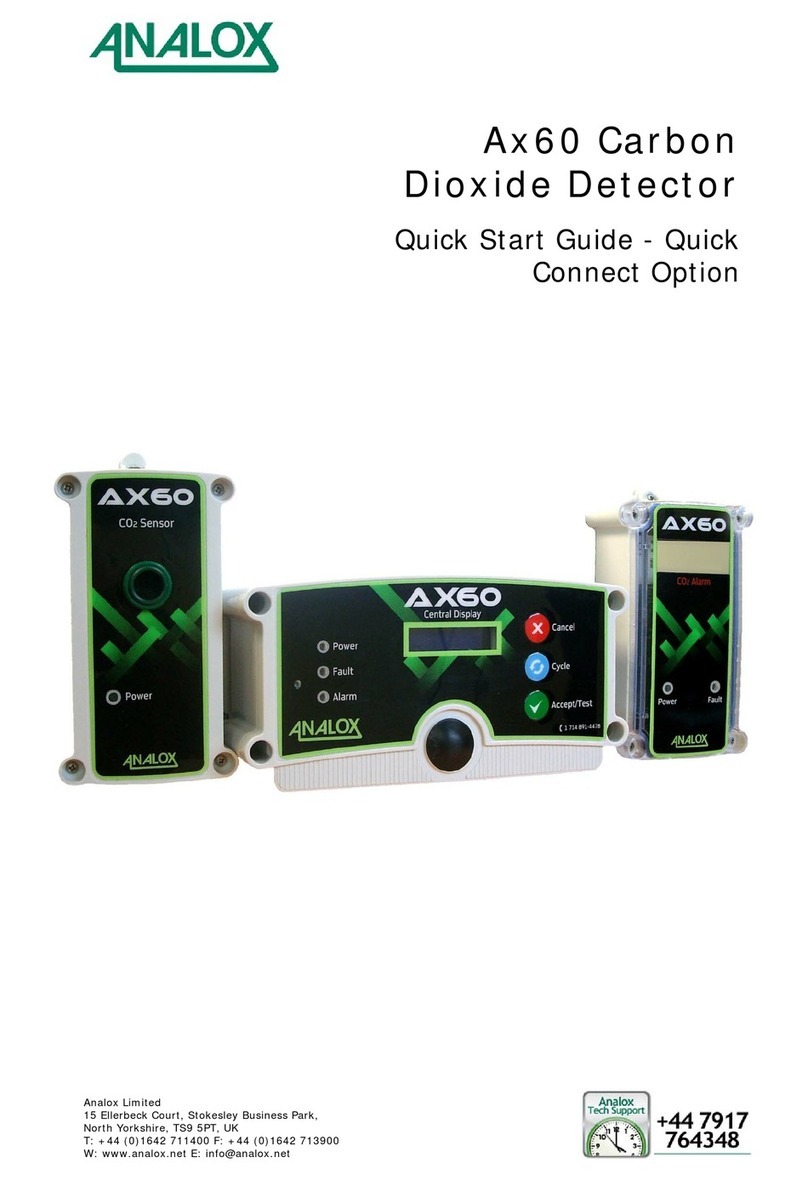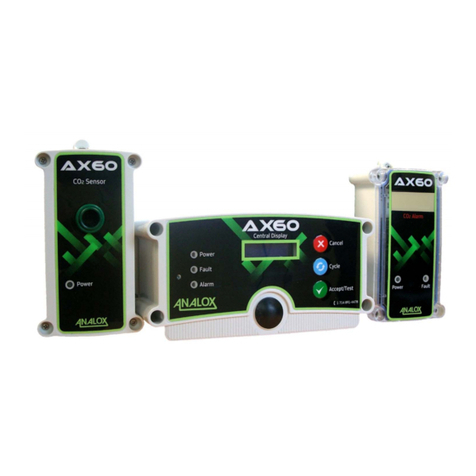A50 Carbon Dioxide Detector
User Manual Int. Approved
Document ref: P0204-8000-03 July 2021 Page 3 of 27
Commercial in Confidence
List of Contents
1. Safety Notes....................................................................................................................4
2. Packaging Contents Check............................................................................................4
3. About the A50 ................................................................................................................5
4. A50 Accessories ..............................................................................................................6
5. Effects of carbon dioxide...............................................................................................7
6. Installation ......................................................................................................................8
6.1. How to fit an A50..................................................................................................................................................... 8
6.2. Remote Alarm Repeaters....................................................................................................................................12
6.2.1. To connect a “Hard Wired” Remote Alarm Repeater ...............................................................................................12
6.2.2. To connect a “Quick Connect” Remote Alarm Repeater.........................................................................................13
6.3. Cleaning.....................................................................................................................................................................13
7. Operation ......................................................................................................................14
7.1. Operation at Altitude ...........................................................................................................................................14
8. Alarm Indications .........................................................................................................15
8.1. Standard Unit ..........................................................................................................................................................15
8.2. TWA (Time Weighted Average) .......................................................................................................................15
8.3. Lamp and Alarm Test ...........................................................................................................................................15
8.3.1. Summary of Status Indicator Lamps................................................................................................................................16
9. Instrument Calibration & Test ....................................................................................17
9.1. Zero calibration adjustment..............................................................................................................................17
9.2. Alarm Test.................................................................................................................................................................19
9.3. Adjusting the Alarm Setpoints .........................................................................................................................20
9.3.1. Adjusting Alarm Setpoints...................................................................................................................................................20
10. Menu Navigation Flow Chart......................................................................................21
11. Technical Specifications...............................................................................................22
12. Disposal.........................................................................................................................23
13. Product variants ...........................................................................................................24
13.1. Part Number Matrix..............................................................................................................................................24
14. Warranty Information..................................................................................................25
15. Declaration of Conformity ..........................................................................................26
16. UK Declaration of Conformity ....................................................................................27































